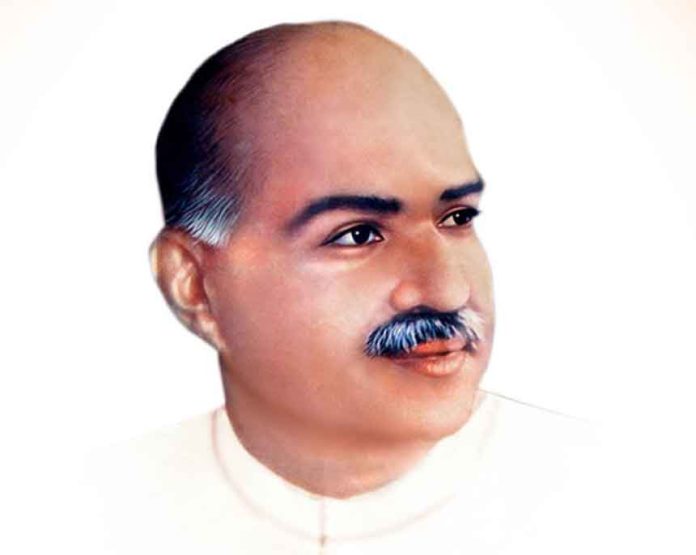CONTENTS
- Nationwide AHDF KCC Campaign
- Syama Prasad Mookerjee Port
Nationwide AHDF KCC Campaign
Focus: GS II: Government Policies and Interventions
Why in News?
As part of the Aazadi Ka Amrit Mahostav celebrations, the Union Ministry for Fisheries, Animal husbandry and Dairying has launched the Nationwide Animal Husbandry, Dairying, and Fisheries (AHDF) KCC Campaign from 1st May 2023 to 31st March 2024.
About Nationwide AHDF KCC Campaign
- The Nationwide AHDF KCC Campaign aims to extend the benefits of the Kisan Credit Card to all eligible animal husbandry, dairy, and fishery farmers in India.
- The campaign will focus on providing credit facilities to small landless farmers involved in animal husbandry and fisheries activities.
Previous Campaigns:
- Since June 2020, the Ministry of Fisheries, Animal Husbandry and Dairying, along with the Department of Financial Services, has organized various campaigns to provide Kisan Credit Card facilities to eligible animal husbandry and fishery farmers.
- Over 27 lakh fresh KCCs were sanctioned during these campaigns.
Current Campaign:
- During the current campaign, District Level KCC Camps will be organized every week.
- These camps will be coordinated by the KCC Coordination Committee led by the Lead District Manager (LDM). The committee will scrutinize the applications sourced by the officials of the State Animal Husbandry and Fisheries department from farmers on-the-spot.
About Kisan Credit Card (KCC)
- The Kisan Credit Card (KCC) scheme is a credit scheme introduced in August 1998 by Indian banks.
- This model scheme was prepared by the National Bank for Agriculture and Rural Development (NABARD) on the recommendations of R. V. Gupta committee to provide term loans for agricultural needs.
- Its objective is to meet the comprehensive credit requirements of the agriculture sector and by 2019 for fisheries and animal husbandry by giving financial support to farmers.
- Participating institutions include all commercial banks, Regional Rural Banks, and state co-operative banks.
Provision of the KCC Scheme
- KCC covers post-harvest expenses, produce marketing loan, consumption requirements of farmer household, working capital for maintenance of farm assets and activities allied to agriculture, investment credit requirement for agriculture and allied activities.
- The scheme comes with an ATM-enabled RuPay debit card with facilities for one-time documentation, built-in cost escalation in the limit, and any number of withdrawals within the limit.
- The scheme has short term credit limits for crops, and term loans.
- Individuals involved in farming and agricultural activities can apply for the KCC. Farmers who cultivate on the land of other people are also eligible to apply for the Card.
- Farmers get the loan of up to Rs 3 Lakh at reduced Interest Rate of 7%. If a farmer manages to repay the loan amount on due date then another 3% rebate can be availed, making the effective Interest Rate as just 4%.
- Farmers can use the KCC card for purchasing seeds, pesticides, fertilizers, for doing payment to labourers, for withdrawal of cash and for purchasing agriculture related products and equipment.
- KCC credit holders are covered under personal accident insurance up to ₹50,000 for death and permanent disability, and up to ₹25,000 for other risk.
Syama Prasad Mookerjee Port
Focus: GS I: Geography
Why in News?
Minister of State for Ports, Shipping and Waterways, Shantanu Thakur flagged off an inaugural shipment from Syama Prasad Mookerjee Port in Kolkata to operationalise the Sittwe Port in Myanmar.
About Syama Prasad Mookerjee Port:
- The Port of Kolkata, also known as Kolkata Port or Syama Prasad Mookerjee Port Trust, is a major riverine port in India located in the city of Kolkata, West Bengal.
- History: Constructed by the British East India Company in 1870, Kolkata Port is the oldest operating port in India.
- Location and Characteristics: Kolkata Port is situated around 203 kilometers from the sea and is a freshwater port with no variation in salinity.
- Dock Systems: The port has two dock systems, namely Kolkata Docks located in Kolkata and a deep-water dock situated in the Haldia Dock Complex in Haldia.
Syama Prasad Mukherjee:

Life and Education
- Shyama Prasad Mukherjee was born on July 6, 1901, in a Bengali family. His father was Ashutosh Mukherjee, a judge of the Calcutta High Court.
- He started his education in Bhawanipur’s Mitra Institution in 1906 and later studied at Presidency College.
- He stood seventeenth in the Inter-Arts Examination in 1916 and graduated in English, securing the first position in first class in 1921.
- He lost his father in 1924, and that same year he enrolled as an advocate in Calcutta High Court.
- In 1934, at the age of 33, he became the youngest vice-chancellor of Calcutta University.
Demand for Partition
- During Mukherjee’s tenure as Vice-Chancellor, Rabindranath Tagore delivered the university convocation address in Bengali for the first time, and the Indian vernacular was introduced as a subject for the highest examination.
- In 1946, Mukherjee demanded the partition of Bengal to prevent its Hindu-majority areas from being included in a Muslim-dominated East Pakistan.
- A meeting held by the Mahasabha on April 15, 1947, in Tarakeswar, authorised him to take steps for ensuring partition of Bengal.
- In May 1947, Mukherjee wrote a letter to Lord Mountbatten telling him that Bengal must be partitioned even if India was not.
- He also opposed a failed bid for a united but independent Bengal made in 1947 by Sarat Bose, the brother of Subhas Chandra Bose, and Huseyn Shaheed Suhrawardy, a Bengali Muslim politician.
Political Career and Death
- Due to differences with then-Prime Minister Dr Jawaharlal Nehru on Jammu and Kashmir issues, he left the Indian National Congress.
- In 1977-1979, he co-founded the Janata Party, which later became the Bharatiya Janata Party.
- Mukherjee died after 40 days of being arrested by the Jammu and Kashmir State police for entering the state without a permit. He passed away in jail under mysterious circumstances.





